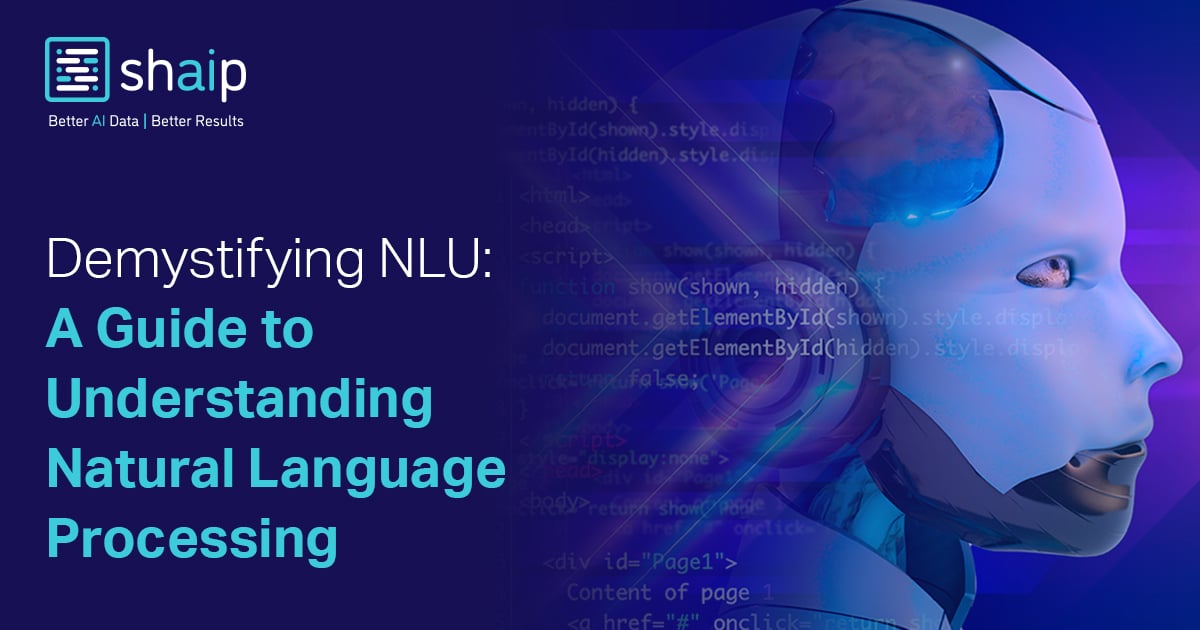
Have you ever talked to a virtual assistant like Siri or Alexa and marveled at how they seem to understand what you’re saying? Or have you used a chatbot to book a flight or order food and been amazed at how the machine knows precisely what you want? These experiences rely on a technology called Natural Language Understanding, or NLU for short.
With the rise of chatbots, virtual assistants, and voice assistants, the need for machines to understand natural language has become more crucial. And this is where Natural Language Understanding (NLU) comes into play. In this article, we’ll delve deeper into what is natural language understanding and explore some of its exciting possibilities.
What is Natural Language Understanding (NLU)?
Natural Language Understanding (NLU) is a subfield of natural language processing (NLP) that deals with computer comprehension of human language. It involves the processing of human language to extract relevant meaning from it. This meaning could be in the form of intent, named entities, or other aspects of human language.
NLP aims to examine and comprehend the written content within a text, whereas NLU enables the capability to engage in conversation with a computer utilizing natural language.
How does Natural Language Understanding (NLU) work?
NLU works by processing large datasets of human language using Machine Learning (ML) models. These models are trained on relevant training data that help them learn to recognize patterns in human language.
The training data used for NLU models typically include labeled examples of human languages, such as customer support tickets, chat logs, or other forms of textual data.
The first step in NLU involves preprocessing the textual data to prepare it for analysis. This may include tasks such as tokenization, which involves breaking down the text into individual words or phrases, or part-of-speech tagging, which involves labeling each word with its grammatical role.
After preprocessing, NLU models use various ML techniques to extract meaning from the text. One common approach is using intent recognition, which involves identifying the purpose or goal behind a given text. For example, an NLU model might recognize that a user’s message is an inquiry about a product or service.
Let’s take a closer look at an example of NLU in action.
Imagine you’re asking Siri for directions to a nearby coffee shop. You might say, “Hey Siri, where’s the closest coffee shop?”
Without NLU, Siri would match your words to pre-programmed responses and might give directions to a coffee shop that’s no longer in business. But with NLU, Siri can understand the intent behind your words and use that understanding to provide a relevant and accurate response. This article will delve deeper into how this technology works and explore some of its exciting possibilities.
Natural language understanding applications
-
IVR and Message Routing

Interactive Voice Response (IVR) systems are automated phone systems that interact with customers through pre-recorded voice prompts and menus. IVR systems use NLU to recognize spoken responses and route callers to the appropriate department or agent.NLU also helps IVR systems understand natural language inputs, enabling customers to speak their queries rather than navigating through menus.
-
Customer Support

NLU has transformed the customer support experience, making it faster and more efficient. Chatbots and virtual assistants can handle many customer queries and provide immediate responses 24/7.Using natural language processing and machine learning, chatbots can understand customer queries and provide relevant answers. This technology also enables chatbots to learn from customer interactions, improving their responses.
-
Machine Translation

NLU plays a crucial role in machine translation (a branch of AI), which is translating text from one language to another using computers.NLU has revolutionized machine translation by enabling the development of neural machine translation (NMT) models.
NLU is essential in NMT models, as it helps to improve the quality of machine translations. It enhances the model’s ability to understand the meaning and intent behind the source text.
For example, When a user employs an automatic language tool like a dictionary to translate information, it simply substitutes words on a one-to-one basis. On the other hand, with machine translation, the system examines the words in their proper context, facilitating the production of a more precise translation.





